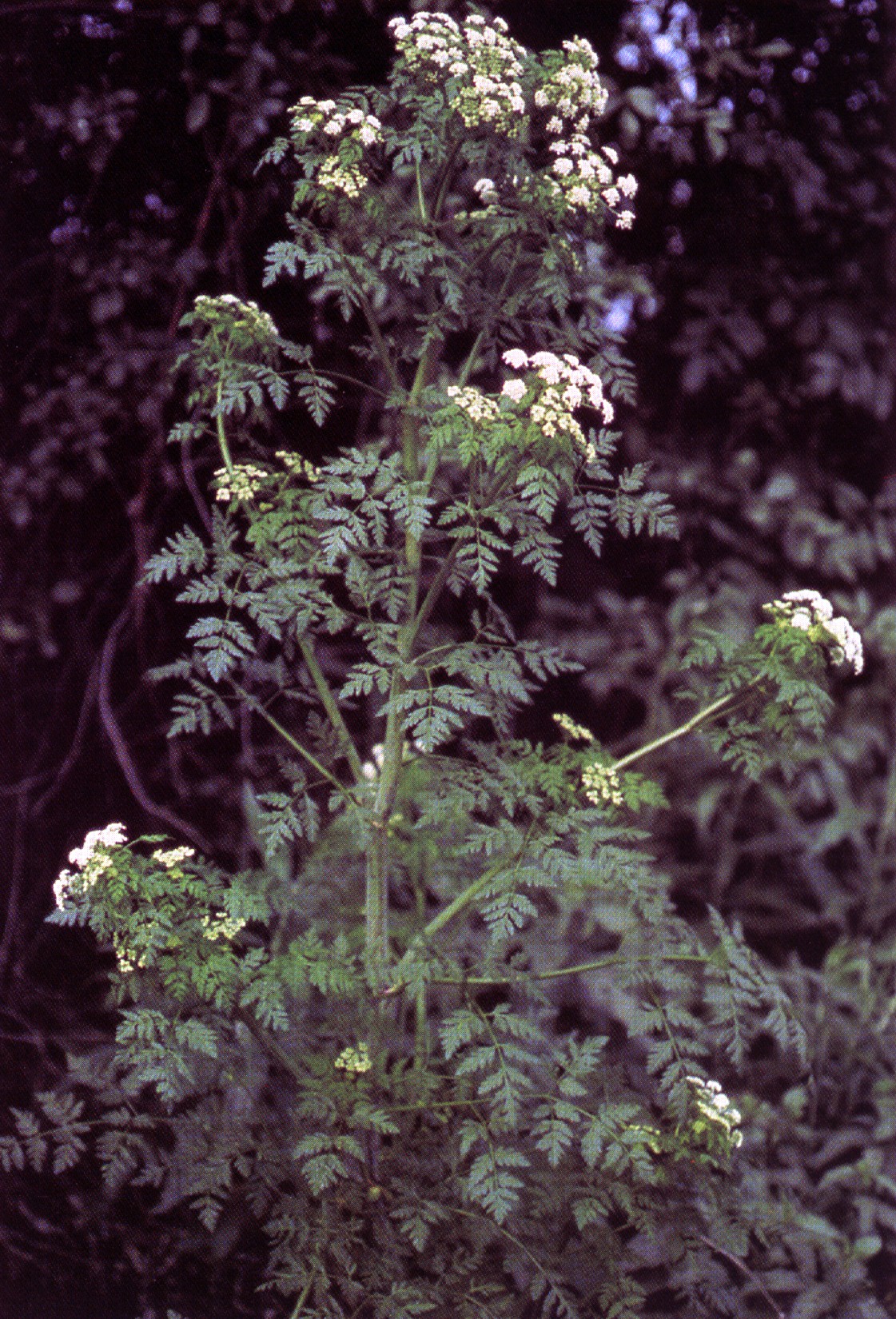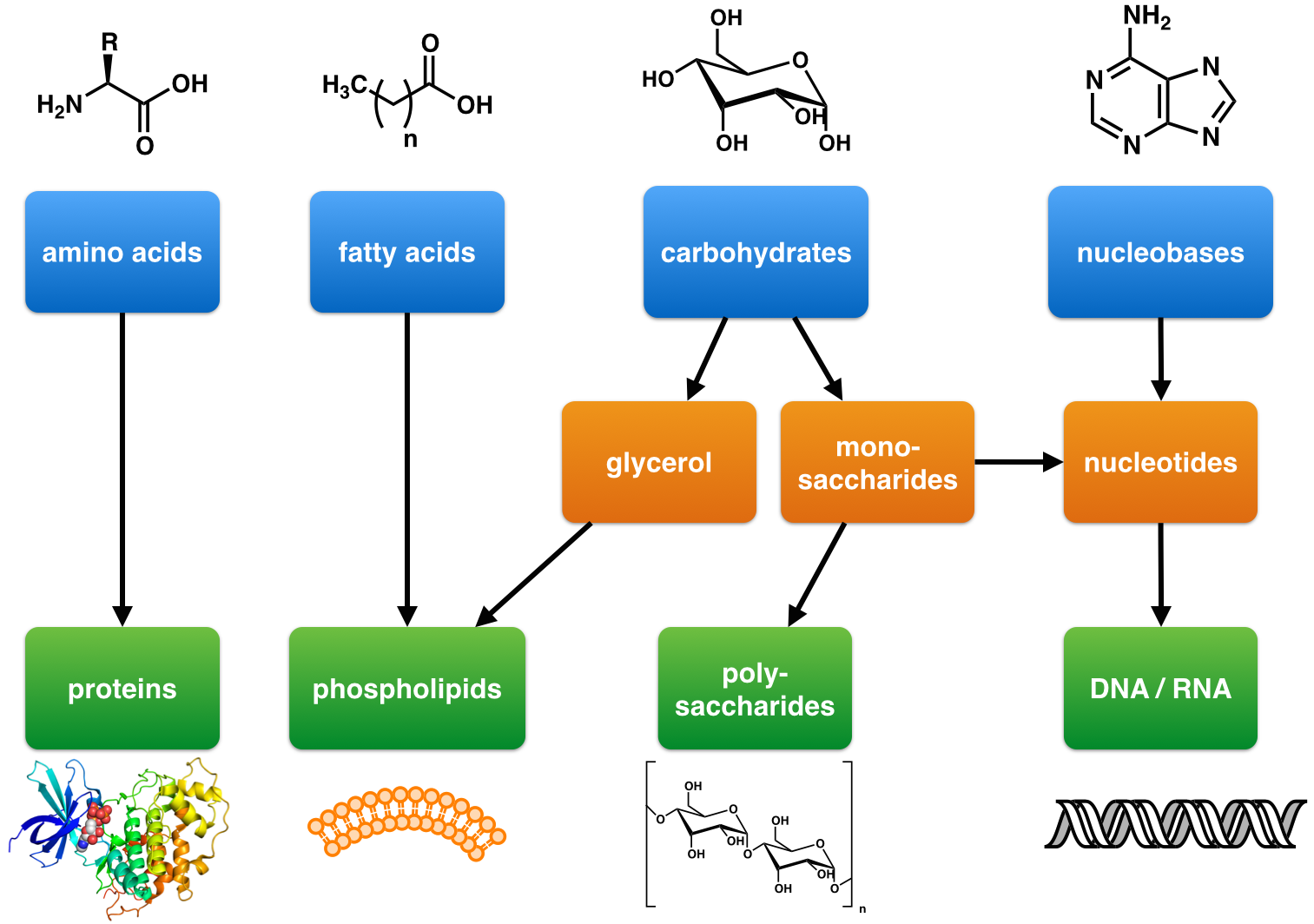|
Conium Alkaloids
Conium alkaloids are natural products of the piperidine alkaloid type. Occurrence Conium alkaloids are found in spotted hemlock. The mature fruits may contain up to 3.5% alkaloids.Eintrag zu Conium-Alkaloide. In: Römpp Online. Georg Thieme Verlag, retrieved 29 April 2020. Representative The main alkaloid is coniine. Other representatives are γ-conicein, conhydrin, pseudoconhydrin, and ''N''-methylconiin. (S)-(+)-Coniine Structural Formula V2.svg, (+)-Coniine (2S,2'R)-(+)-Conhydrine Structural Formula V2.svg, (+)-Conhydrin (3S,6S)-(+)-Pseudoconhydrine Structural Formula V2.svg, (+)-Pseudoconhydrin Most Conium alkaloids are liquid at room temperature.''Brockhaus ABC Chemie'', VEB F. A. Brockhaus Verlag Leipzig 1965, p. 714. Properties 500 mg of coniin is fatal to a human. Coniin is the poison of the spotted hemlock. Poisoning results in nausea, vomiting, salivation, and diarrhea. Within half an hour to an hour, paralysis of the chest muscles occurs, which is fat ... [...More Info...] [...Related Items...] OR: [Wikipedia] [Google] [Baidu] |
Conium
''Conium'' ( or ) is a genus of flowering plants in the family Apiaceae. , Plants of the World Online accepts six species. All species of the genus are poisonous to humans. ''C. maculatum'', also known as hemlock, is infamous for being highly poisonous. Hemlock is native to temperate regions of Europe, North Africa and Western Asia. The species ''C. chaerophylloides'', ''C. fontanum'', and ''C. sphaerocarpum'' are all native to southern Africa. Description Plants of the genus ''Conium'' are eudicots, flowering plants distinguished by their two cotyledons (embryonic leaves) and tricolpate (three-pored) pollen. They are typically biennial, forming basal rosettes in the first year of growth, and sprouting a rigid, hollow flower stalk in the second. Germination occurs between spring and autumn. Occasionally, plants which germinate in early spring are annual instead of biennial. These plants grow best in wet, poorly drained areas with nutrient rich soil. They grow well in nitrogen ... [...More Info...] [...Related Items...] OR: [Wikipedia] [Google] [Baidu] |
Natural Product
A natural product is a natural compound or substance produced by a living organism—that is, found in nature. In the broadest sense, natural products include any substance produced by life. Natural products can also be prepared by chemical synthesis (both semisynthesis and total synthesis and have played a central role in the development of the field of organic chemistry by providing challenging synthetic targets). The term ''natural product'' has also been extended for commercial purposes to refer to cosmetics, dietary supplements, and foods produced from natural sources without added artificial ingredients. Within the field of organic chemistry, the definition of natural products is usually restricted to organic compounds isolated from natural sources that are produced by the pathways of primary or secondary metabolism. Within the field of medicinal chemistry, the definition is often further restricted to secondary metabolites. Secondary metabolites (or specialized meta ... [...More Info...] [...Related Items...] OR: [Wikipedia] [Google] [Baidu] |
Piperidine Alkaloid
Piperidine alkaloids are naturally occurring chemical compounds from the group of alkaloids, which are chemically derived from piperidine. Alkaloids with a piperidine building block are widespread and are usually further subdivided according to their occurrence and biogenetic origin. The most important representative of piperidine alkaloids is piperine, which is responsible for the pungent taste of pepper. The piperidine alkaloids also include the sedum alkaloids (e.g. sedamine), pelletierine, the lobelia alkaloids (e.g. lobeline), the conium alkaloids (such as coniine) and the pinus alkaloids. Piperin.svg, Piperine Lobeline Structural Formula V2.svg, Lobeline (S)-Coniine Structural Formula V.1.svg, (''S'')-Coniine (2R,8R)-Sedamine Structural Formula V4.svg, Sedamin Solenopsin Structural Formula V.1.svg, Solenopsin Solenopsin is a lipophilic alkaloid with the molecular formula C17H35N found in the venom of fire ants (''Solenopsis''). It is considered the primary toxin in ... [...More Info...] [...Related Items...] OR: [Wikipedia] [Google] [Baidu] |
Spotted Hemlock
''Cicuta maculata'' is a highly poisonous species of flowering plant in the carrot family known by several common names, including spotted water hemlock, spotted parsley, and spotted cowbane. It is native to nearly all of North America, from northern Canada to southern Mexico. Description ''Cicuta maculata'' is a rhizomatous perennial herb producing a hollow erect stem that can reach a height of . The long leaves are made up of several lance-shaped, pointed, serrated leaflets. Each shiny green leaflet is long and the entire leaf may be up to long. The inflorescence of white flowers is similar in appearance to other species in the carrot family. It is a compound umbel with many clusters of flowers. The dry tan-brown fruit is a few millimeters long. The plant prefers wet habitats, such as wet meadows, roadside ditches, pond margins, open marshes, and freshwater swamps. Flowering is from May to September. The poisonous plant is occasionally mistaken for parsnips, due to its clus ... [...More Info...] [...Related Items...] OR: [Wikipedia] [Google] [Baidu] |
Coniine
Coniine is a poisonous chemical compound, an alkaloid present in and isolable from poison hemlock ('' Conium maculatum''), where its presence has been a source of significant economic, medical, and historico-cultural interest; coniine is also produced by the yellow pitcher plant (''Sarracenia flava''), and fool's parsley ('' Aethusa cynapium''). Its ingestion and extended exposure are toxic to humans and all classes of livestock; its mechanism of poisoning involves disruption of the central nervous system, with death caused by respiratory paralysis. The biosynthesis of coniine contains as its penultimate step the non- enzymatic cyclisation of 5-oxooctylamine to γ-coniceine, a Schiff base differing from coniine only by its carbon-nitrogen double bond in the ring. This pathway results in natural coniine that is a mixture—a racemate—composed of two enantiomers, the stereoisomers (''S'')-(+)-coniine and (''R'')-(−)-coniine, depending on the direction taken by the chain th ... [...More Info...] [...Related Items...] OR: [Wikipedia] [Google] [Baidu] |
Hemlock Cup
Hemlock may refer to: Plants *''Conium maculatum'', a poisonous herbaceous plant **more broadly, other species in the genus ''Conium''; not to be confused with the related water hemlock and hemlock water-dropwort *''Tsuga'', a genus of coniferous trees Places Communities in the United States * Hemlock, Indiana * Hemlock, Michigan * Hemlock, New York * Hemlock, Ohio * Hemlock, Tillamook County, Oregon * Hemlock, Virginia * Hemlock, Washington * Hemlock, Fayette County, West Virginia * Hemlock, Jackson County, West Virginia * Hemlock, Wisconsin *Hemlock Township, Columbia County, Pennsylvania Bodies of water * Hemlock Creek (other) * Hemlock Falls (other) *Hemlock Lake, one of the Finger Lakes in New York *McKay Lake (Ottawa), formerly known as Hemlock Lake Music * Hemlock (band), an American heavy metal band * Hemlock Ernst, the moniker used by American singer and rapper Samuel T. Herring * Hemlock Recordings, a British record label founded by musician Untol ... [...More Info...] [...Related Items...] OR: [Wikipedia] [Google] [Baidu] |
Socrates
Socrates (; ; – 399 BC) was a Ancient Greek philosophy, Greek philosopher from Classical Athens, Athens who is credited as the founder of Western philosophy and as among the first moral philosophers of the Ethics, ethical tradition of thought. An enigmatic figure, Socrates authored no texts and is known mainly through the posthumous accounts of classical writers, particularly his students Plato and Xenophon. These accounts are written as dialogues, in which Socrates and his interlocutors examine a subject in the style of question and answer; they gave rise to the Socratic dialogue literary genre. Contradictory accounts of Socrates make a reconstruction of his philosophy nearly impossible, a situation known as the Socratic problem. Socrates was a polarizing figure in Athenian society. In 399 BC, he was accused of Asebeia, impiety and corrupting the youth. After Trial of Socrates, a trial that lasted a day, he was sentenced to death. He spent his last day in prison ... [...More Info...] [...Related Items...] OR: [Wikipedia] [Google] [Baidu] |
Adalbert Wollrab
Adalbert is a German given name which means "noble bright" or "noble shining", derived from the words ''adal'' (meaning noble) and ''berht'' (shining or bright). Alternative spellings include Adelbart, Adelbert and Adalberto. Derivative names include Albert and Elbert. Because St Adalbert of Prague (†997), early mediaeval missionary who became Czech, Polish and Hungarian patron saint, at his confirmation changed his name from native Vojtěch to Adalbert, this Germanic name has been artificially assigned to Slavonic Vojtěch/Wojciech ("he who is happy in battle") and via the same process have been the names Vojtěch and Adalbert connected with Hungarian name Béla (maybe "inner part") – so, in Central European settings these three names are taken as the equivalents, although they have no linguistic connection to each other. Given name * Adalbert Begas (1836–1888), German painter * Adalbert Baumann (1870–1943), Bavarian teacher * Adalbert Czerny (1863–1941), Austrian ... [...More Info...] [...Related Items...] OR: [Wikipedia] [Google] [Baidu] |



